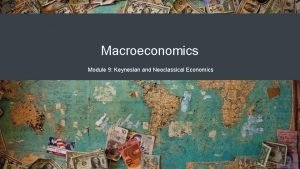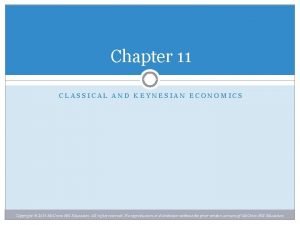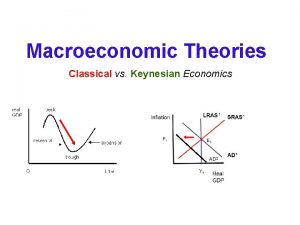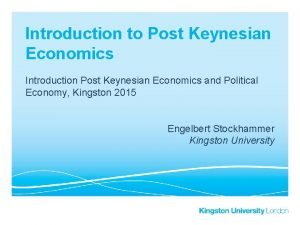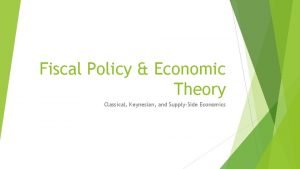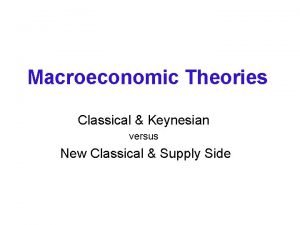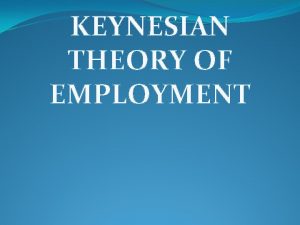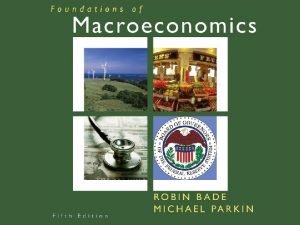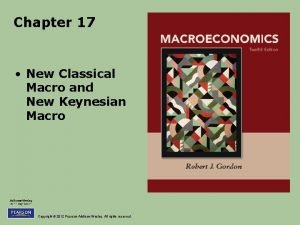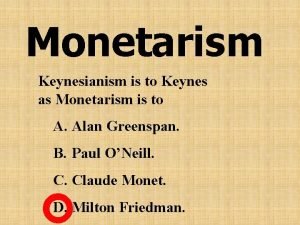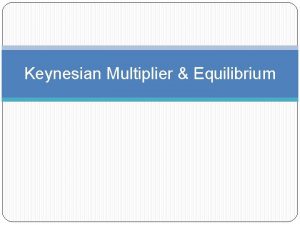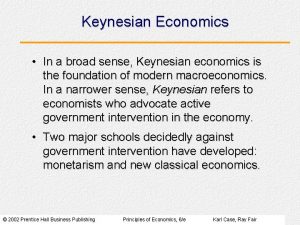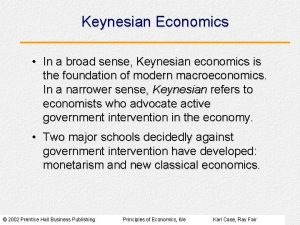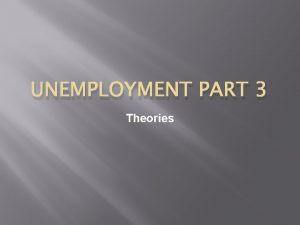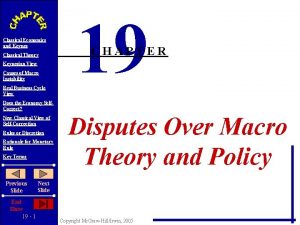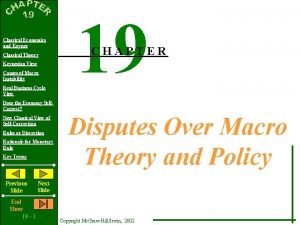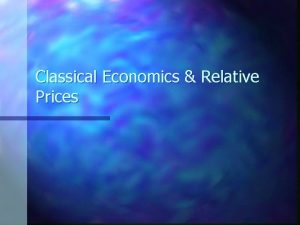Macroeconomic Theories Classical vs Keynesian Economics AD 2











- Slides: 11

Macroeconomic Theories Classical vs. Keynesian Economics AD 2

FISCAL POLICY REVIEW Economy is too slow => “hit gas” => Use Expansionary Fiscal Policy Economy is too fast => “hit brakes” => Use Contractionary Fiscal Policy

Economic Schools of Thought Classical Economics |--------------| 1800 1929 Keynesian Economics |--------------| 1936 1979 Neo. Classical Economics |----------------| 1980 2008 Housing Bubble Great Depression? Classical Economics Failed Now What? Keynesian Economics did not help here!

Reading • Read Keynesian Handout

CLASSICAL Economists Classical economists were the 1 st school of economic thought starting in 1776 Adam Smith was the founder and they believed: – – Markets are naturally self regulating No government intervention necessary Recessions are temporary Great Depression challenged Classical View

KEYNESIAN VIEW 1. Economy is inherently unstable • not self regulating 2. Recessions can be long & permanent 3. Major government intervention necessary • Became popular after Great Depression (think FDR) 4. Support welfare and government assistance 5. Stagflation challenged Keynesian view 1883 -1946

Theory – Period Challenged Classical Theory - Great Depression (1929) Keynesian Economics- Stagflation (late 1970’s) Neo-Classical Theory Great Recession (2008)

Keynesian vs. Classical • Keynesian economists felt recessions could be long/permanent – More AD was needed to “fix” economy => so cut taxes & ↑ Gov’t Spending • Classical economists felt recessions would “self regulate” because prices would fall which would lead to more jobs – SRAS shift right whenever prices adjusted lower

Classical vs. Keynesian Economy is too slow => “Do Nothing=> let prices adjust” or Help now! => use Expansionary Fiscal Policy

Keynesian vs. Classicial “Keynesian Gov’t Intervention: “Classical Self Regulation” Recession => expansionary fiscal policy • • Taxes ↓ & Gov’t Spending ↑ C ↑ + G ↑ => AD ↑ Let economy “self regulate” Prices eventually adjust => SRAS ↑ LRAS 1 Inflation E 1 AD 2 AD 1 Q 2 P 1 ----- E 1 -------- P 1 ----- LRAS 1 Inflation E 2 ---- P 2 ------- SRAS 1 P 2 -------Real GDP Q 1 E 2 Q 2 AD 1 Real GDP Compare Results: Both have Same Real GDP & Employment Keynesian leads to more debt & higher inflation SRAS 1 SRAS 2

 Economics keynesian vs classical
Economics keynesian vs classical Monetarist vs keynesian vs classical
Monetarist vs keynesian vs classical Classical economics vs keynesian
Classical economics vs keynesian Keynesian policy
Keynesian policy Keynesian economics policy
Keynesian economics policy Monetarist vs classical economics
Monetarist vs classical economics New classical and new keynesian macroeconomics
New classical and new keynesian macroeconomics Explain the keynesian theory of employment
Explain the keynesian theory of employment Monetarist vs keynesian vs classical
Monetarist vs keynesian vs classical Keynesian vs classical vs monetarist
Keynesian vs classical vs monetarist Monetarism vs keynesianism
Monetarism vs keynesianism New classical macroeconomics
New classical macroeconomics
